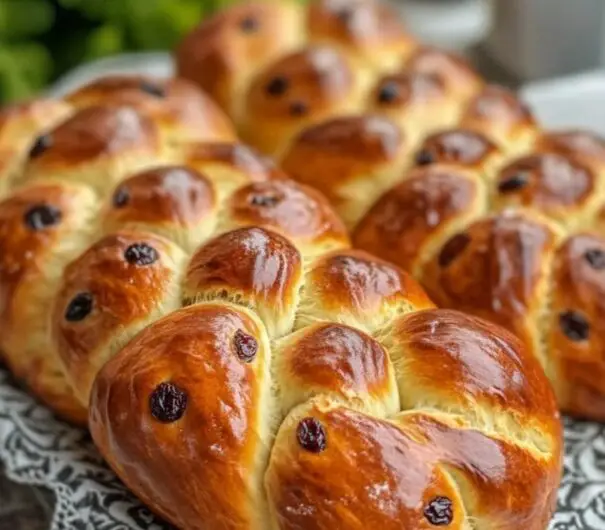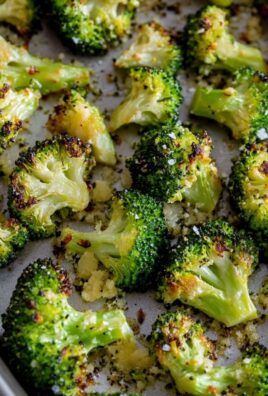Looking for a Portuguese Easter bread recipe that’s both traditional and delicious? This Portuguese Easter bread is a classic holiday treat that features soft, slightly sweet dough infused with raisins and a beautiful braided shape. Perfect for celebrating Easter, this homemade bread combines rich flavors and a soft texture that will impress your guests.

This Portuguese Easter bread recipe uses simple ingredients like milk, butter, and active dry yeast, creating a fluffy and tender bread. The addition of raisins gives it a natural sweetness, making it a favorite among those who enjoy a slightly sweet bread. With its stunning braided presentation, this bread will be the centerpiece of any holiday brunch or Easter gathering.
This easy Portuguese bread recipe includes clear instructions on how to make the dough, braid it, and bake it to perfection. Whether you’re looking for a bread to serve alongside a meal or something to enjoy with your morning coffee, this Portuguese Easter bread is versatile, flavorful, and perfect for any occasion.
Ingredients:
- 1 and 1/2 cups very warm milk
- 1 cup white sugar + 1 tsp sugar
- 1/2 cup (8 Tbsp) unsalted butter, softened
- 1 tsp salt
- 2 envelopes active dry yeast (1 and 1/2 Tbsp)
- 3 large eggs, well-beaten
- 6 and 1/2 cups unsifted all-purpose flour
- 1 egg
- 1 tsp water
- 3/4 to 1 cup white or brown raisins + 2 cups boiling water
Instructions:
- Prepare the Raisins: In a bowl, place 1 cup of white or brown raisins and pour over 2 cups of boiling water. Let them sit for about 10 minutes. Drain well and set aside.
- Activate the Yeast: Pour 1/2 cup of warm milk into a large measuring cup. Add 1 tsp sugar and sprinkle the yeast over the top. Stir gently and let it sit for about 10 minutes, or until bubbly and doubled in volume.
- Prepare the Dough Mixture: In a large bowl, combine 1 cup of very warm milk, 1 cup of sugar, softened butter, and 1 tsp salt. Stir until most of the butter has melted.
- Combine Wet Ingredients: Stir in the 3 well-beaten eggs and the activated yeast mixture into the milk mixture.
- Add Flour: Using a dough hook attachment (or a wooden spoon if mixing by hand), gradually add the 6 and 1/2 cups of flour, one cup at a time, until a soft dough forms. Knead the dough for 8-12 minutes, either by hand or with the dough hook, until smooth and elastic. The dough should remain slightly sticky but should not stick to your fingers.
- Incorporate Raisins: Stir in the soaked and drained raisins, distributing them evenly throughout the dough.
- First Rise: Transfer the dough to a large, buttered bowl, turning it to coat the dough with butter. Cover with a tea towel and place it in a warm, draft-free area to rise for about 1 and 1/2 hours, or until it doubles in volume. A low oven (around 100°F) can also be used for this purpose.
- Shape the Dough: Punch the dough down. Turn it out onto a lightly floured surface and divide it in half. Divide one half into four equal pieces and roll each piece into a 15-inch strip. Braid the strips together, pinching the ends to secure the braid.
- Second Rise: Place each braid in a buttered baking dish. Cover with a towel and let the bread rise for another 30 minutes.
- Prepare for Baking: Preheat the oven to 375°F. Beat 1 egg with 1 tsp of water and brush the egg wash generously over the top and sides of the braided bread.
- Bake: Bake each loaf separately for 20-22 minutes or until golden brown. Let the bread cool slightly before serving.
Tips:
- Use Warm Milk: Be sure the milk is warm but not hot to help activate the yeast. About 110°F is ideal.
- Knead Well: Kneading the dough is key for a smooth, elastic texture. If using a stand mixer, keep the speed low to avoid overworking the dough.
- Check for Golden Brown: The bread should be golden brown on top. If you’re unsure, check the internal temperature of the bread with a thermometer—it should reach 190°F.
Variations and Substitutions:
- Raisins: You can use golden raisins, currants, or sultanas as alternatives to the standard raisins.
- Add Nuts: Feel free to add chopped nuts like almonds or walnuts to the dough for extra flavor and crunch.
- Egg Wash Alternatives: If you don’t have eggs, you can brush the bread with a milk wash for a lighter finish.
FAQs:
Q: Can I make this bread ahead of time? A: Yes, you can prepare the dough the night before and let it rise in the fridge overnight. Just let it come to room temperature before shaping and baking.
Q: What can I do if the bread isn’t browning? A: If the bread isn’t browning to your liking, you can cover it loosely with aluminum foil and bake it for a few more minutes.
Serving Suggestions:
- Perfect for Easter Brunch: Serve slices of this bread with butter, jam, or honey.
- Pair with Cheese: It also pairs beautifully with soft cheeses, like brie or cream cheese.
- Great for Gift-Giving: This bread makes an excellent gift for friends and family during the holidays or special occasions.
Why You’ll Love This Recipe:
Portuguese Easter Bread is not only delicious, but it’s also a beautiful centerpiece for your table. The soft, slightly sweet bread with raisins has a lovely texture and flavor. It’s perfect for any occasion, especially during Easter celebrations, and the braid makes it a festive treat. Whether served as a side dish or enjoyed on its own, this bread is sure to be a hit!
Portuguese Easter Bread Recipe
10
servings3
hours22
minutesIngredients
and 1/2 cups very warm milk
1 cup white sugar + 1 tsp sugar
1/2 cup (8 Tbsp) unsalted butter, softened
1 tsp salt
2 envelopes active dry yeast (1 and 1/2 Tbsp)
3 large eggs, well-beaten
6 and 1/2 cups unsifted all-purpose flour
1 egg
1 tsp water
3/4 to 1 cup white or brown raisins + 2 cups boiling water
Directions
- Prepare the Raisins: In a bowl, place 1 cup of white or brown raisins and pour over 2 cups of boiling water. Let them sit for about 10 minutes. Drain well and set aside.
- Activate the Yeast: Pour 1/2 cup of warm milk into a large measuring cup. Add 1 tsp sugar and sprinkle the yeast over the top. Stir gently and let it sit for about 10 minutes, or until bubbly and doubled in volume.
- Prepare the Dough Mixture: In a large bowl, combine 1 cup of very warm milk, 1 cup of sugar, softened butter, and 1 tsp salt. Stir until most of the butter has melted.
- Combine Wet Ingredients: Stir in the 3 well-beaten eggs and the activated yeast mixture into the milk mixture.
- Add Flour: Using a dough hook attachment (or a wooden spoon if mixing by hand), gradually add the 6 and 1/2 cups of flour, one cup at a time, until a soft dough forms. Knead the dough for 8-12 minutes, either by hand or with the dough hook, until smooth and elastic. The dough should remain slightly sticky but should not stick to your fingers.
- Incorporate Raisins: Stir in the soaked and drained raisins, distributing them evenly throughout the dough.
- First Rise: Transfer the dough to a large, buttered bowl, turning it to coat the dough with butter. Cover with a tea towel and place it in a warm, draft-free area to rise for about 1 and 1/2 hours, or until it doubles in volume. A low oven (around 100°F) can also be used for this purpose.
- Shape the Dough: Punch the dough down. Turn it out onto a lightly floured surface and divide it in half. Divide one half into four equal pieces and roll each piece into a 15-inch strip. Braid the strips together, pinching the ends to secure the braid.
- Second Rise: Place each braid in a buttered baking dish. Cover with a towel and let the bread rise for another 30 minutes.
- Prepare for Baking: Preheat the oven to 375°F. Beat 1 egg with 1 tsp of water and brush the egg wash generously over the top and sides of the braided bread.
- Bake: Bake each loaf separately for 20-22 minutes or until golden brown. Let the bread cool slightly before serving.




Leave a Comment